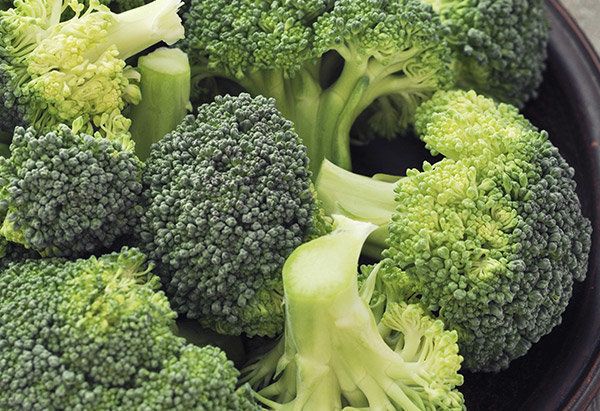Forget the cheese sauce. Jennifer Tyler Lee, creator of a website that gets families to eat more vegetables, shows us a few ways to take everything from asparagus to radicchio to new levels.
By Lynn Andriani
1
The Classics: Extra-Virgin Olive Oil and Kosher Salt

Chris Chowaniec
Jennifer Tyler Lee's new book, The 52 New Foods Challenge, bursts with creative suggestions for making vegetables crazy-delicious, but there's one combination she says can't be beat: a glug of good olive oil and a liberal sprinkling of kosher salt. She says these work especially well on potentially bitter vegetables, such as Brussels sprouts, radicchio, cauliflower and asparagus. Lee coats them in oil, dashes them with salt and roasts them until they're soft and starting to brown. Although the temperature varies for each veg (and for each oven), a good rule of thumb is to cook heartier foods, such as cauliflower and whole sprouts, at higher temperatures (around 400°), and more fragile ones, like asparagus and radicchio, lower (around 350°). The oil helps the veggies soften and begin to caramelize, mellowing them out and helping them develop a subtle sweetness.
Get the recipe: Roasted Brussels-Sprouts Chips
Get the recipe: Roasted Brussels-Sprouts Chips
2
The Textural Treats: Seeds

Chris Chowaniec
One of the easiest ways to dress up familiar favorites, whether sautéed green beans or shredded carrots, is to top them with what Lee calls "sprinkles." Sesame seeds, roasted pumpkin seeds or sliced almonds add crunch, visual interest and extra nutrition. The key is to put the seeds on food right before serving, so they retain their crispness and don't get soggy. Lee also loves walnuts and pomegranate seeds.
Get the recipe: Roasted Pumpkin Seeds
Get the recipe: Roasted Pumpkin Seeds
3
The Baking Cabinet Surprise: Spices

Chris Chowaniec
Cinnamon with bok choy? Broccoli with star anise? We were skeptical too, but Lee convinced us that these warm, slightly spicy ingredients can transform greens, especially when you put them in Asian stir-fries and soups. In fact, Lee combines both cinnamon and star anise in a comforting beef-noodle soup with bok choy that's her go-to winter dish, and might just become yours, too. You can also just sauté greens with a few pods of star anise or a cinnamon stick.
Get the recipe: Cinnamon Beef-Noodle Soup with Bok Choy
Get the recipe: Cinnamon Beef-Noodle Soup with Bok Choy
Advertisement
4
The Sushi Chef's Favorite: Tamari

aksenya/iStock/Thinkstock
It may be the darling of the gluten-free world, but tamari has much more to offer than just the flavor of soy sauce without (or with much less) wheat. It's darker in color and richer in flavor than Chinese soy sauce, minus the bite. It works wonders on eggplant and asparagus, as well as on green beans and spinach, says Lee. Shake some on while cooking, or just before serving.
Get the recipe: Japanese Eggplant Stir-Fry Recipe
Get the recipe: Japanese Eggplant Stir-Fry Recipe
5
The Dark Horse: Chickpeas

Line Klein/Getty Images
Keep a can of chickpeas in your pantry and you'll never face a boring plate of wilted greens again. Lee incorporates these little legumes into sautéed kale, cooking them first in some oil and garlic until they begin to brown but are still soft inside. Then she tosses in the kale along with water or stock, and cooks them five minutes more. This trick works with spinach or Swiss chard too, and is one of the fastest ways you can turn a vegetable into a main course.
Get the recipe: Sautéed Kale and Cranberries with Chickpeas
Get the recipe: Sautéed Kale and Cranberries with Chickpeas


